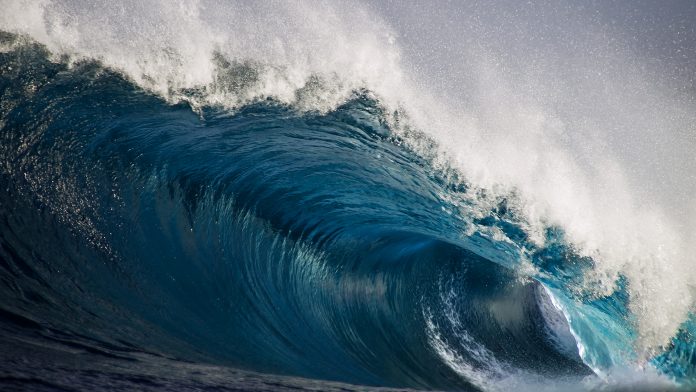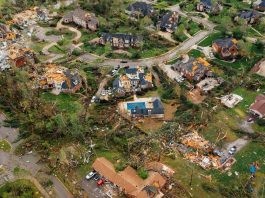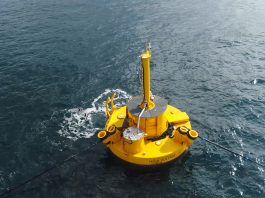Researchers from the University of Tokyo use muon particle technology to observe and detect tsunami waves.
Highly energetic particles called muons are ever present in the atmosphere and can pass through large objects with ease. Sensitive detectors installed along the Tokyo Bay tunnel measure muons passing through the sea above them. This allows for changes in the volume of water above the tunnel to be calculated. For the first time, this method was used to accurately detect a tsunami following a typhoon in 2021.
Using muons to detect changes in sea levels
In September 2021, a typhoon approached Japan from the South. As it travelled closer to the land it brought with it ocean swells and tsunamis. On this occasion these tsunami waves were quite mild, however, throughout history tsunamis have caused great damage to many coastal areas around Japan.

As the huge swell moved into Tokyo Bay, something happened on a microscopic level that was almost imperceptible. Atmospheric muon particles, generated by cosmic rays from deep space, were slightly more scattered by the extra volume of water than they would be otherwise. This means the quantity of muons passing through Tokyo Bay varied as the ocean swelled.
Professor Hiroyuki Tanaka from Muographix at the University of Tokyo has made his career out of exploring applications for muons. He has utilised them to view inside volcanoes and even detect evidence of ancient earthquakes. Recently, Tanaka and his international team of researchers have turned their focus to meteorological phenomena, in particular, tsunamis.
“The Tokyo-bay Seafloor Hyper KiloMetric Submarine Deep Detector (TS-HKMSDD) is the first underwater muon observatory in the world, and it detected varying muon activity during the tsunami,” explained Tanaka. “This variation corresponds to the ocean swells which were measured by other methods. Combining these readings means we can use muographic data to accurately model changes in sea level, bypassing other methods which come with drawbacks.”
Observing tsunami waves
There are other ways to measure changes in sea level, with physical mechanisms such as tide gauges, satellites, buoys, or sensors on the sea floor itself. However, the TS-HKMSDD and future instruments based on it that are installed in undersea tunnels, can be cheaper to build and run and easier to access to retrieve data. They also possess the ability to not suffer from physical wear and tear as they have no moving parts. Critically though, the data from TS-HKMSDD is both real time and highly accurate, two key criteria that could make it suitable for a reliable early warning system.
“Thanks to the success we have had from early tests such as this, similar systems are already being trialled in the UK and Finland,” said Tanaka. “Obviously, an undertaking like this comes with challenges and installing delicate instruments in a busy tunnel could be difficult. But we are grateful for the cooperation of the agencies responsible for the Tokyo Bay tunnel. To the best of my knowledge, the tunnel is now the first active national road in the world defined as a laboratory.”
Tanaka and his team have many other ways in store to make use of muons, including a possible way to accurately synchronise time around the world, and, a spatial positioning system far more accurate than current GPS.









